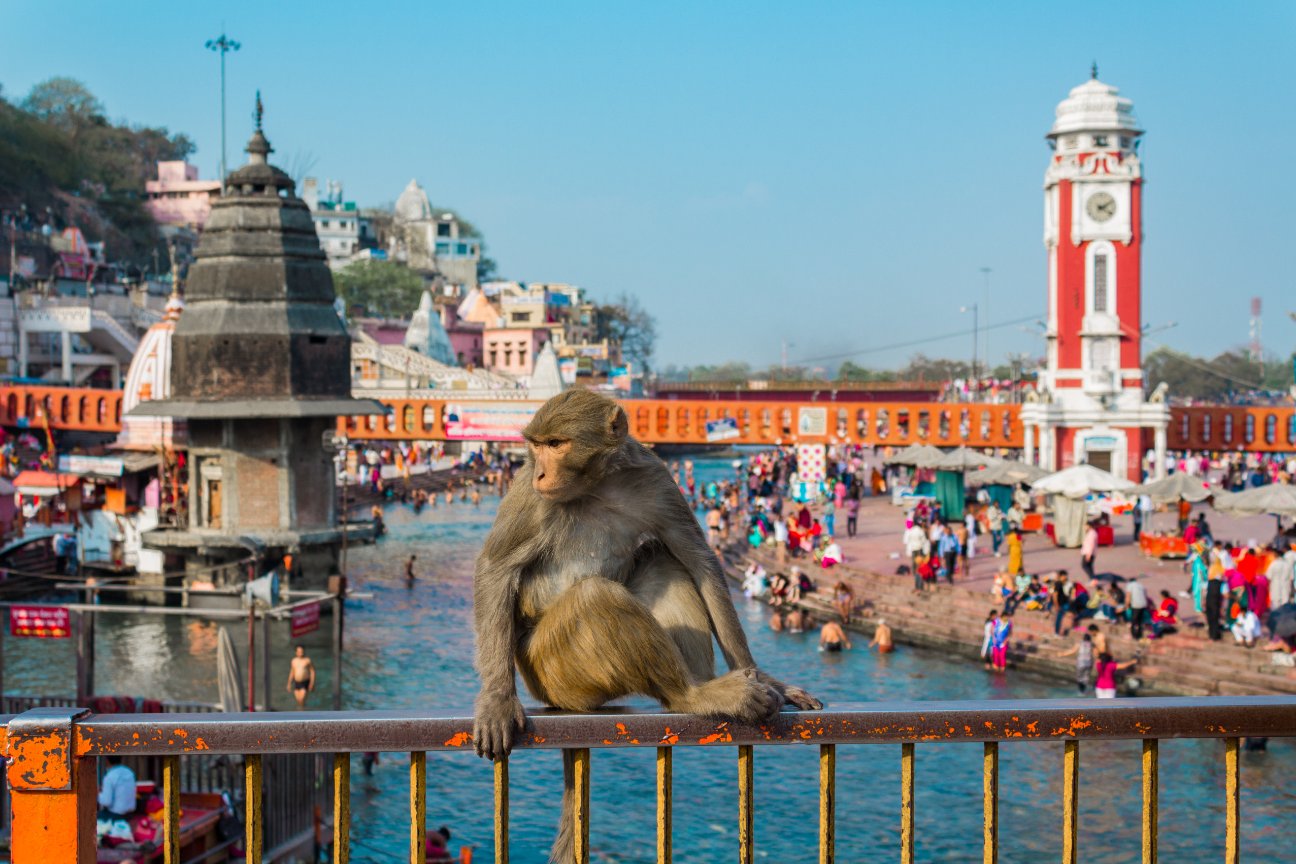From officially being declared vermin to odd conflict management attempts, are monkeys a menace or simply victims of overpopulation? Here’s my take on the issue.
It is virtually impossible to go to tourist destinations in India without seeing rhesus monkeys. Popular tourist guidebooks and websites warn tourists to stay away from the macaques despite their ‘cute looks’. They have been reported to steal food, attack tourists, and in one tragic incident killed a baby boy. And it’s not just tourist destinations that suffer. Troops of monkeys have been creating havoc in our capital too – stealing food and mobile phones.
This led to some innovative solutions. Langurwallahs – men with trained langurs – were hired to drive away the smaller macaques. This is illegal under the Wildlife Protection Act, 1972, and violators may be fined or imprisoned up to three years or both. Most residents were happy that their properties were being kept safe from the marauding monkeys and thus turned a blind eye, knowingly or through ignorance, to wildlife law. The illegality of this process was brought to the attention of the public, media and concerned authorities by a prominent politician who had the langurs confiscated and sent to a wildlife sanctuary to be rehabilitated and the langurwallahs to jail.
With the langurs gone, the capital was at the mercy of the macaques once more. This led to another innovative, albeit funny, solution. Grown men were dressed in langur costumes to drive away monkeys from the grounds of the Parliament House.
Innovative though this may be, the use of langurs or their human-sized doppelgangers to keep the macaques at bay was simply a temporary solution. Also, imagine having ‘langur impersonator’ on your CV!

Haridwar, Jaipur, and Delhi are some of the most popular tourist destinations with monkeys. (Image courtesy - Shutterstock)
Rural Woes:
Human-monkey conflict isn’t confined to urban areas alone. Macaques have been harassing rural Indians too by extensive crop raiding. This excerpt from an article in Down to Earth outlines the issue succinctly.
“At 10 AM, Ramesh Verma, a retired animal husbandry official who now does farming in Chaukha village, hurries from his farm to attend a meeting called at the sarpanch’s residence to address the issue of monkey menace. Monkeys had destroyed his entire corn plantation last year. “I had invested Rs 50,000 to plant corn on my 1.2-hectare (ha) farm. Monkeys completely destroyed it,” he says. Ironically, the drawing room where the meeting is convened has a big Hanuman calendar on its wall.”
According to Tehlka.com, 12 states lost crops worth 286 crores and horticultural crops worth 173 crores in the year 2017 – 18 alone due to monkeys.
Reasons Behind the Rise in Conflict:
Macaques are highly adaptable and live in urban areas with ease. They have also become habituated to human food. It isn’t uncommon to see a monkey munching out of a packet of chips in urban or touristy areas. Macaques are also happy to eat cooked food offered to them by religious people.
The easy availability of food has meant that monkeys in urban areas thrive without having to spend time foraging for food – giving them plenty of time to engage in other types of monkey business, including procreating. With few natural predators, their numbers have thrived.
Additionally, the depredation of high-quality natural habitats due to encroachment, logging, and other human activities has meant that monkeys living in forested areas bordering rural populations turn to fields for easy forage.
Curbing the Conflict:
The rhesus macaque is considered to be the image of the god Hanuman, a perception which can make management techniques and advisories difficult. Management techniques have ranged from anti-depredation patrols, use of electric fences, selective cropping, translocation, and sterilization.
There have been attempts made to relocate monkeys from heavily populated urban areas to wildlife sanctuaries or forested areas near rural populations. One such famous translocation was from urban Delhi to Asola-Bhatti Wildlife Sanctuary in the southern range of the Delhi Forest Division. The monkeys dispersed to nearby human settlements, giving rise to conflict. In essence, this operation resulted only in the translocation of the conflict: not a solution.
Culling, too, has not met with success despite macaques being declared vermin in Himachal Pradesh in 2017. There are a few reasons behind this. Kisan Sabha leader, Kuldeep Tanwar, quoted in The Citizen states:“We are of the view that a common man cannot shoot and does not have the capacity to bear the high cost of ammunition. Even with farmers who have licensed arms, how do you expect a person to go out killing monkeys when he has not lifted his gun for the last three decades, since hunting was banned?” Also, which God-fearing person would be ready to take up arms against an incarnation of Lord Hanuman himself?
Previous experience has shown that culling doesn’t really work as a long-term solution. The 2007 cull of rhesus monkeys in Himachal Pradesh provided temporary relief. Areas where monkeys were culled acted as sink areas, attracting new populations of monkeys.
Sterilization has been attempted on various occasions with populations returning to original levels in short spans of time. Organizations seem to be reluctant to take up the cause.
So far, the management of human-monkey conflict seems to be carried out haphazardly at local levels with little or no coordination with human stakeholders. Well-studied, well-funded, and multi-pronged approaches are the need of the day to reduce this conflict.